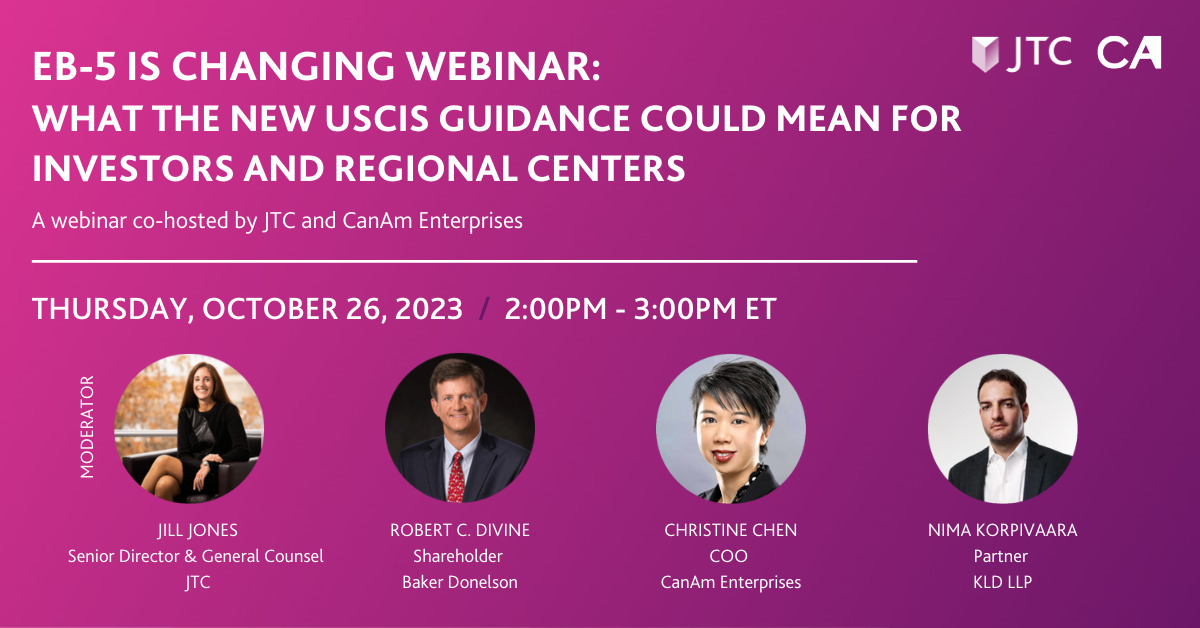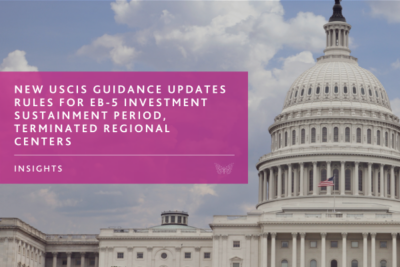The EB-5 Immigrant Investor Program in 2020: A New Era Begins
-By Tom Rosenfeld
Nearly 30 years ago, Congress established the EB-5 program in order to encourage and attract foreign direct investment in the U.S. for the benefit of rural communities and urban areas in need of economic development and job creation. Since then, the EB-5 program has given tens of thousands of ambitious entrepreneurs and their families the opportunity to begin a new life in the U.S. in exchange for their capital investments in important job-creating enterprises. Now that the EB-5 Program has recently undergone dramatic regulatory changes, this is the question many investors are asking: “What now”?
EB-5 is at an important crossroads
The EB-5 industry is at an important crossroads following a year of significant changes and upheaval. While we may see fewer regional centers participating in the EB-5 program and raising capital may become more challenging, I am convinced the industry and its key stakeholders will adapt and thrive in this new environment if we unify on visa relief in 2020.
For the EB-5 community, 2019 will be remembered as a year of significant changes. First and foremost, the minimum capital investment amounts increased for the first time since the inception of EB-5 Program in 1990 – from $500,000 to $900,000 in rural and high unemployment areas and from $1,000,000 to $1,800,000 elsewhere.
The new regulations also tighten the criteria for designating high unemployment areas. Whereas under the prior rules these designations were made by state and local governments with USCIS merely deferring to these jurisdication, now, USCIS will have exclusive authority to make such determinations. Moreover, whereas previously high unemployment areas could be comprised of any number of contiguous census tracts with an average unemployment rate exceeding 150% of the national average, the new regulations limit the scope of high unemployment areas to only the census tract or contiguous census tract(s) where the project is located and any or all directly adjacent census tracts. This revised standard will most certainly disqualify a number of projects that would have previously qualified for the lower investment threshold.
The EB-5 Program begins a new era
For the past five years, EB-5 stakeholders have had their attentions divided between which legislative changes would most benefit or harm the EB-5 program, while trying to maximize as many qualifying projects and investors before the changes take effect. This has distracted us from the greatest threat to EB-5’s long-term viability: the dramatically increasing backlog wait times for more and more countries.
We’ve collectively made the EB-5 program an attractive and credible “investment for immigration” option that has created millions of U.S. jobs. But with the longest visa backlog times at 16 years and more countries with increasing processing times, the EB-5 community has been forced to enter new markets year after year that are not yet experienced delays. Yet, the interest in EB-5 investment hasn’t flagged. In fact, the kind of predictability and track record that, ironically, caused the backlogs in those countries, has also caused greater interest in EB-5. As a result, there are plenty of investors in backlogged countries that would be eager to make an EB-5 investment even at the new program requirements if there were some prospect that Congress would address the visa dilemma. Legislators have long conditioned that EB-5 program reform would have to take place before the issue of increased visas could be broached. Now that the regulations have been implemented, all EB-5 stakeholders must unify behind the demand for an increased visa allocation.
Several options to reduce the visa backlog have been floated over the past years. It has been argued Congress envisioned to admit 10,000 investor families to create 100,000 jobs. In reality, about 3,000 principal investors and their family members are admitted annually. Simply returning to the original purpose of the EB-5 program of creating 100,000 new jobs per year and not counting qualified family members towards the EB-5 visa quota, would significantly reduce the backlog and increase jobs. Alternatively, since the EB-5 visa is directly linked to job creation in the U.S., it has often been proposed to allocate more visa numbers from other categories, such as the diversity visa. Another option is to allocate all unused EB-5 visas from previous years which would significantly help alleviate the backlog.
Any of these possibilities would dramatically reduce wait times for backlogged investors. A reduction of even a few years would give hope to thousands of investors who made plans to relocate their families to allow a child to attend school or university in the U.S. without fear that the child will have aged out by the time a visa becomes available.
It is well documented that many EB-5 investors continue their entrepreneurial efforts here in the U.S. and create significant numbers of additional new jobs unrelated to their EB-5 investments. The U.S. is fortunate to have talented entrepreneurs from around the world who want to make meaningful contributions to our country. We should support and welcome them. Right now, that means giving visa relief to the EB-5 investors.
Note: A revised version of this article was published on Crain’s New York on March 2, 2020
Tom Rosenfeld is the President and CEO of CanAm Enterprises, a leading regional center operator under the EB-5 Immigrant Investor Program. CanAm has financed 60 projects and raised nearly $3 billion in EB-5 investments in the metropolitan regions of New York & New Jersey, the city of Philadelphia, the Commonwealth of Pennsylvania, the states of California, Hawaii, Florida, and Texas. For more information, please visit: www.canamenterprises.com




